Estimate the Cost of Software Development
Last updated: March 26, 2023 Read in fullscreen view
- 07 Jul 2024
 Top Fintech Companies in Vietnam Driving Innovation Across Digital Banking & Investment 28/44
Top Fintech Companies in Vietnam Driving Innovation Across Digital Banking & Investment 28/44 - 18 Oct 2020
 How to use the "Knowns" and "Unknowns" technique to manage assumptions 21/989
How to use the "Knowns" and "Unknowns" technique to manage assumptions 21/989 - 01 Oct 2020
 Fail fast, learn faster with Agile methodology 13/973
Fail fast, learn faster with Agile methodology 13/973 - 24 Nov 2025
 Top Blockchain Companies in Vietnam 11/28
Top Blockchain Companies in Vietnam 11/28 - 05 Aug 2025
 Why Doesn’t South Korea Outsource Its IT Projects Like Other Developed Countries? 10/83
Why Doesn’t South Korea Outsource Its IT Projects Like Other Developed Countries? 10/83 - 15 Oct 2022
 Project-based team model for one-off and pilot software development projects 10/730
Project-based team model for one-off and pilot software development projects 10/730 - 03 Oct 2020
 Outsourcing Your MVP Development - Streamlined Solutions for future 9/400
Outsourcing Your MVP Development - Streamlined Solutions for future 9/400 - 10 Nov 2022
 Poor Code Indicators and How to Improve Your Code? 8/214
Poor Code Indicators and How to Improve Your Code? 8/214 - 19 Oct 2021
 Is gold plating good or bad in project management? 7/754
Is gold plating good or bad in project management? 7/754 - 21 Aug 2025
 Top 30 Oldest IT Outsourcing Companies in Vietnam 7/89
Top 30 Oldest IT Outsourcing Companies in Vietnam 7/89 - 31 Oct 2025
 The True ROI of Software Development Outsourcing for Tech Startups 7/58
The True ROI of Software Development Outsourcing for Tech Startups 7/58 - 01 Mar 2023
 Bug Prioritization - What are the 5 levels of priority? 6/207
Bug Prioritization - What are the 5 levels of priority? 6/207 - 01 Sep 2022
 Facts Chart: Why Do Software Projects Fail? 6/540
Facts Chart: Why Do Software Projects Fail? 6/540 - 06 Feb 2021
 Why fail fast and learn fast? 6/375
Why fail fast and learn fast? 6/375 - 24 Nov 2021
 What is the Actual Cost of Hiring Cheap Developers? 6/348
What is the Actual Cost of Hiring Cheap Developers? 6/348 - 08 Nov 2022
 4 tips for meeting tough deadlines when outsourcing projects to software vendor 6/254
4 tips for meeting tough deadlines when outsourcing projects to software vendor 6/254 - 22 Mar 2022
 8 Mistakes Marketing Agencies or Consulting Firms Make When Outsourcing Web Development 6/324
8 Mistakes Marketing Agencies or Consulting Firms Make When Outsourcing Web Development 6/324 - 10 May 2021
 Project Audit and Second Opinion Services 6/236
Project Audit and Second Opinion Services 6/236 - 05 Jan 2022
 What Outsourcing Engagement Model is Right For You? 5/290
What Outsourcing Engagement Model is Right For You? 5/290 - 11 Mar 2023
 Common Pain Points in Software Development Outsourcing 5/227
Common Pain Points in Software Development Outsourcing 5/227 - 12 May 2021
 The Real Cost Between Outsourcing IT vs In-House: A Quick Comparison 5/401
The Real Cost Between Outsourcing IT vs In-House: A Quick Comparison 5/401 - 06 Mar 2021
 4 things you need to do before getting an accurate quote for your software development 5/616
4 things you need to do before getting an accurate quote for your software development 5/616 - 25 Sep 2025
 A Practical Guide to Secure Online Work for Outsourced Teams 5/56
A Practical Guide to Secure Online Work for Outsourced Teams 5/56 - 14 Oct 2021
 Advantages and Disadvantages of Time and Material Contract (T&M) 4/789
Advantages and Disadvantages of Time and Material Contract (T&M) 4/789 - 14 Dec 2021
 The Top 10 Problems with Outsourcing Implementation and How to Solve Them 4/376
The Top 10 Problems with Outsourcing Implementation and How to Solve Them 4/376 - 09 Jan 2021
 How can outsourcing enable business agility? 4/178
How can outsourcing enable business agility? 4/178 - 02 May 2021
 Outsourcing Software Development: Avoid 8 Mistakes 4/89
Outsourcing Software Development: Avoid 8 Mistakes 4/89 - 21 Oct 2021
 Advantages and Disadvantages of IT Outsourcing 3/321
Advantages and Disadvantages of IT Outsourcing 3/321 - 16 Apr 2021
 Insightful Business Technology Consulting at TIGO 3/376
Insightful Business Technology Consulting at TIGO 3/376 - 16 Dec 2021
 Why outsource Python development of your project? 3/445
Why outsource Python development of your project? 3/445 - 16 Feb 2021
 Choose Outsourcing for Your Non Disclosure Agreement (NDA) 3/150
Choose Outsourcing for Your Non Disclosure Agreement (NDA) 3/150 - 09 Mar 2022
 Consultant Implementation Pricing 3/184
Consultant Implementation Pricing 3/184 - 01 Jan 2023
 4 New IT Outsourcing Pricing Models to consider in 2023 3/323
4 New IT Outsourcing Pricing Models to consider in 2023 3/323 - 18 Aug 2022
 What are the consequences of poor requirements with software development projects? 3/242
What are the consequences of poor requirements with software development projects? 3/242 - 12 Jan 2023
 Top 10 Trustworthy IT Outsourcing Companies in Vietnam 3/262
Top 10 Trustworthy IT Outsourcing Companies in Vietnam 3/262 - 01 Jan 2023
 Why is Vietnam the Top IT Outsourcing Destination of 2023? 3/202
Why is Vietnam the Top IT Outsourcing Destination of 2023? 3/202 - 31 Oct 2021
 Tips to Fail Fast With Outsourcing 3/375
Tips to Fail Fast With Outsourcing 3/375 - 08 Oct 2022
 KPI - The New Leadership 3/557
KPI - The New Leadership 3/557 - 19 Mar 2021
 Selective Outsourcing of IT Functions - a new trend in business outsourcing 3/495
Selective Outsourcing of IT Functions - a new trend in business outsourcing 3/495 - 01 Jan 2024
 Tech Partnerships: Choosing the Right Software Outsourcing Firm in Vietnam 3/165
Tech Partnerships: Choosing the Right Software Outsourcing Firm in Vietnam 3/165 - 08 Oct 2024
 Vietnam: The Rising Star in Global Outsourcing – Trends and Costs for 2025 3/289
Vietnam: The Rising Star in Global Outsourcing – Trends and Costs for 2025 3/289 - 07 Nov 2024
 Outsourcing Crisis Looming: Will Trump's Policies Transform the Global IT Landscape? 3/157
Outsourcing Crisis Looming: Will Trump's Policies Transform the Global IT Landscape? 3/157 - 01 Jan 2024
 12 reasons for software development outsourcing 3/146
12 reasons for software development outsourcing 3/146 - 01 Jan 2024
 Software Outsourcing Questions for 2024 3/145
Software Outsourcing Questions for 2024 3/145 - 03 Nov 2021
 7 phases of Odoo Implementation and Development: Can they be outsourced? 2/357
7 phases of Odoo Implementation and Development: Can they be outsourced? 2/357 - 21 Oct 2022
 Outsourcing Billable Rate 2/244
Outsourcing Billable Rate 2/244 - 10 Dec 2023
 Pain points of User Acceptance Testing (UAT) 2/416
Pain points of User Acceptance Testing (UAT) 2/416 - 17 Oct 2020
 How Outsourcing can Improve Time Management for Better Business 2/184
How Outsourcing can Improve Time Management for Better Business 2/184 - 28 Dec 2021
 8 types of pricing models in software development outsourcing 2/417
8 types of pricing models in software development outsourcing 2/417 - 28 Oct 2022
 Expect the unexpected in 2023 - How Outsourcing Can Help? 2/184
Expect the unexpected in 2023 - How Outsourcing Can Help? 2/184 - 13 Dec 2020
 Move fast, fail fast, fail-safe 2/292
Move fast, fail fast, fail-safe 2/292 - 23 Sep 2021
 INFOGRAPHIC: Top 9 Software Outsourcing Mistakes 2/411
INFOGRAPHIC: Top 9 Software Outsourcing Mistakes 2/411 - 10 May 2021
 What are things you should look for in a good IT outsourcing company? 2/405
What are things you should look for in a good IT outsourcing company? 2/405 - 07 Jul 2021
 The 5 Levels of IT Help Desk Support 2/380
The 5 Levels of IT Help Desk Support 2/380 - 17 Feb 2022
 Prioritizing Software Requirements with Kano Analysis 2/280
Prioritizing Software Requirements with Kano Analysis 2/280 - 01 Jan 2023
 Software Development Outsourcing Trends to Watch Out for in 2023 2/268
Software Development Outsourcing Trends to Watch Out for in 2023 2/268 - 04 Jan 2021
 VIETNAM AS A BIG ATTRACTIVE DESTINATION IN THE FIELD OF OUTSOURCING 2/276
VIETNAM AS A BIG ATTRACTIVE DESTINATION IN THE FIELD OF OUTSOURCING 2/276 - 01 Oct 2022
 Vietnam is a favorite supply of IT outsourcing services to Japan 2/230
Vietnam is a favorite supply of IT outsourcing services to Japan 2/230 - 06 Oct 2021
 Intellectual property issues with outsourcing software development 2/364
Intellectual property issues with outsourcing software development 2/364 - 01 Sep 2019
 Outsourcing Software To Vietnam: Facts, benefits and limitations 2/392
Outsourcing Software To Vietnam: Facts, benefits and limitations 2/392 - 08 Feb 2022
 Software Development: Fixed Cost or Opportunity Cost? 2/444
Software Development: Fixed Cost or Opportunity Cost? 2/444 - 10 Apr 2021
 RFP vs POC: Why the proof of concept is replacing the request for proposal 2/254
RFP vs POC: Why the proof of concept is replacing the request for proposal 2/254 - 30 Oct 2022
 How Much Does MVP Development Cost in 2023? 1/170
How Much Does MVP Development Cost in 2023? 1/170 - 31 Dec 2021
 Outsourcing Software Development to mitigate the impact of COVID-19 1/289
Outsourcing Software Development to mitigate the impact of COVID-19 1/289 - 21 Aug 2022
 Forbes: IT Outsourcing Hotspot: Vietnam, A Small But Mighty Powerhouse 1/240
Forbes: IT Outsourcing Hotspot: Vietnam, A Small But Mighty Powerhouse 1/240 - 09 Feb 2023
 The Challenge of Fixed-Bid Software Projects 1/191
The Challenge of Fixed-Bid Software Projects 1/191 - 01 Mar 2022
 Top 5 reasons why outsourcing to Vietnam is a smart move 1/262
Top 5 reasons why outsourcing to Vietnam is a smart move 1/262 - 01 Apr 2021
 IT Outsourcing to vietnam: Why It Is A Good Choice? 1/258
IT Outsourcing to vietnam: Why It Is A Good Choice? 1/258 - 09 Sep 2022
 Close Collaboration and Communication Can Overcome the Challenges of Distributed Teams 1/129
Close Collaboration and Communication Can Overcome the Challenges of Distributed Teams 1/129 - 13 Jan 2023
 What are the Hourly Rates in Offshore Software Development? 1/223
What are the Hourly Rates in Offshore Software Development? 1/223 - 03 Jan 2023
 IT Outsourcing Costs: Is outsourcing really cost-effective? 1/185
IT Outsourcing Costs: Is outsourcing really cost-effective? 1/185 - 08 Aug 2021
 Why Nearshore Software Development is better than In-House Development? 1/174
Why Nearshore Software Development is better than In-House Development? 1/174 - 07 Aug 2022
 Things to Consider When Choosing a Technology Partner 1/251
Things to Consider When Choosing a Technology Partner 1/251 - 07 Oct 2022
 Digital Transformation: Become a Technology Powerhouse 1/216
Digital Transformation: Become a Technology Powerhouse 1/216 - 15 Aug 2021
 TIGO Rate Formula - Things the partners should know 1/418
TIGO Rate Formula - Things the partners should know 1/418 - 19 Apr 2021
 7 Most Common Time-Wasters For Software Development 1/525
7 Most Common Time-Wasters For Software Development 1/525 - 13 Oct 2021
 Why Outsourcing Software Development Services Is Gaining Traction With Non-Technical Leaders? 1/299
Why Outsourcing Software Development Services Is Gaining Traction With Non-Technical Leaders? 1/299 - 11 Mar 2024
 Why You Should Hire Odoo Developers from Vietnam to Customize Your ERP System 1/89
Why You Should Hire Odoo Developers from Vietnam to Customize Your ERP System 1/89 - 01 Jun 2025
 10 Sustainable & Unique IT Outsourcing Companies in Vietnam 1/58
10 Sustainable & Unique IT Outsourcing Companies in Vietnam 1/58 - 04 Apr 2024
 Unlock Vietnamese-Japanese outsourcing potential 1/214
Unlock Vietnamese-Japanese outsourcing potential 1/214 - 01 Jan 2024
 Hiring Tech Talents in Asia: An Overview of Skills, Costs, and Potential 1/148
Hiring Tech Talents in Asia: An Overview of Skills, Costs, and Potential 1/148 - 01 May 2023
 CTO Interview Questions 1/296
CTO Interview Questions 1/296 - 11 Jan 2024
 What are the Benefits and Limitations of Augmented Intelligence? 1/434
What are the Benefits and Limitations of Augmented Intelligence? 1/434 - 01 Jan 2024
 What The World Is Flat Means to IT Outsourcing 1/157
What The World Is Flat Means to IT Outsourcing 1/157 - 02 Nov 2023
 What are the pros and cons of iIT outsourcing? 1/184
What are the pros and cons of iIT outsourcing? 1/184 - 01 May 2023
 Streamline Your Business with Outsourcing 1/168
Streamline Your Business with Outsourcing 1/168 - 17 Jan 2024
 What are the benefits and challenges of using multi-sourcing or single-sourcing strategies? 1/157
What are the benefits and challenges of using multi-sourcing or single-sourcing strategies? 1/157 - 10 Jan 2024
 Facts Chart: Reasons for outsourcing 1/132
Facts Chart: Reasons for outsourcing 1/132 - 26 Dec 2023
 Improving Meeting Effectiveness Through the Six Thinking Hats 1/205
Improving Meeting Effectiveness Through the Six Thinking Hats 1/205 - 05 Jan 2024
 Easy ASANA tips & tricks for you and your team 1/180
Easy ASANA tips & tricks for you and your team 1/180 - 01 Feb 2023
 [InfoWorld] Is your outsourcer agile enough? /182
[InfoWorld] Is your outsourcer agile enough? /182 - 20 Nov 2022
 Software Requirements Are A Communication Problem /233
Software Requirements Are A Communication Problem /233 - 01 Jan 2023
 Top Software Development Challenges in 2023 /275
Top Software Development Challenges in 2023 /275 - 08 Jan 2024
 Outsourcing on an As-Needed Basis /144
Outsourcing on an As-Needed Basis /144 - 12 Mar 2024
 How do you create FOMO in software prospects? /127
How do you create FOMO in software prospects? /127 - 17 Mar 2025
 IT Consultants in Digital Transformation /62
IT Consultants in Digital Transformation /62 - 10 Jul 2025
 Building AI-Driven Knowledge Graphs from Unstructured Data /111
Building AI-Driven Knowledge Graphs from Unstructured Data /111 - 14 Mar 2024
 Why should you opt for software localization from a professional agency? /117
Why should you opt for software localization from a professional agency? /117 - 01 Mar 2023
 How do you deal with disputes and conflicts that may arise during a software consulting project? /145
How do you deal with disputes and conflicts that may arise during a software consulting project? /145 - 12 Oct 2021
 Vietnam outsourcing path - the silk road connecting ASEAN with the developed countries (EU, US, Japan...) /282
Vietnam outsourcing path - the silk road connecting ASEAN with the developed countries (EU, US, Japan...) /282 - 06 Nov 2019
 How to Access Software Project Size? /236
How to Access Software Project Size? /236 - 19 Oct 2020
 The hidden costs of outsourcing software development /434
The hidden costs of outsourcing software development /434 - 25 Nov 2021
 Low-Cost Software Development: Buy Nice or Buy Twice? /278
Low-Cost Software Development: Buy Nice or Buy Twice? /278 - 03 Nov 2022
 Top questions and answers you must know before ask for software outsourcing /264
Top questions and answers you must know before ask for software outsourcing /264 - 03 Nov 2022
 Top questions and answers you must know before ask for software outsourcing /264
Top questions and answers you must know before ask for software outsourcing /264 - 16 Mar 2021
 Outsource Data Engineering Services - TIGO Streamlined Solutions /234
Outsource Data Engineering Services - TIGO Streamlined Solutions /234 - 01 Jan 2023
 Top 5 IT outsourcing countries in 2023 /254
Top 5 IT outsourcing countries in 2023 /254 - 15 Nov 2023
 IT Staff Augmentation Types and the Best Choice for Your Business /155
IT Staff Augmentation Types and the Best Choice for Your Business /155 - 09 Jan 2022
 How to Bridge the Gap Between Business and IT? /163
How to Bridge the Gap Between Business and IT? /163 - 10 Mar 2021
 The 7 Biggest Mistakes to Avoid Before Outsourcing a Web Development Project /224
The 7 Biggest Mistakes to Avoid Before Outsourcing a Web Development Project /224
When a company or individual looks to estimate the cost of software development, inevitably questions like “How much?” and “How long?” are asked.
Two questions define the constraints that most clients experience in project work – “Can I afford this?” and “Can it be done in time to meet my expectations?”. Almost every sales meeting regarding software development revolves around getting answers to these questions. Often customers don’t realize the factors that affect the cost of software development. Estimates of software development costs can vary and the estimate process is not transparent to customers.
Here we outline what goes into estimating the amount of effort and costs of a software development project. These points will clarify the difference between timeline and effort, explore what factors are utilized to come up with an initial estimate, then discuss specific examples of projects with pricing estimates.
Every engagement is unique and there is no one simple formula that will work for EVERY scenario. That said, we at TIGOSOFTWARE have been helping companies for over a decade and are happy to share a few rules of thumb to use when estimating project cost. We’ve been able to identify 3 main components that have the largest effect on project cost and timeline.
3 Main Factors of Software Costing
Let’s explore 3 main factors that most affect software development effort/pricing:
- Type of Software Project
- Size of Software Project
- Development Team Size
1. Type of Software Project
From a high level, typical software development engagements tend to break down into the following types:
- New Software Development: new software, involving custom development.
- Software Modification: Enhancement of existing software.
- Software Integration: Custom code to add capability or integrate existing software into other processes. This would include plugins to packages like Office as well as manipulating data flowing between an inventory system like Netsuite with an accounting system like Quickbooks.
- Web Development: custom web-based software development
Each of these types of projects typically has a different team makeup and requires a different amount of development effort. Understanding the type of project is the first step in developing a cost estimate. This information will be used in combination with the size of the project and the project team to determine the final estimate.
2. Size of Software Project
The next step is to determine the size of a project. Size is a bit of a gut call. There tends to be a tight correlation between the complexity of a project and its size, but that isn’t always the case. Generally, project sizes fall into the following categories:
A small project usually involves minor changes. Typically, things like tweaks to the user interface or bug fixes that are well defined with a known cause. Interaction with the client is limited, i.e. “Is this what you want to be done?” followed up by, “Here is what we did..”
These engagements are more substantial than a small tweak but likely have a well-defined scope of deliverables and are often standalone solutions or integrations. Typically, we are dealing with a single source of data. Projects such as a small mobile application or a web interface to an existing inventory system would fall into this category. The external requirements for interaction with a client are more robust than small projects. This might include a few design sessions, weekly check-ins, and milestone sign-offs.
These solutions include more depth and complexity. Large projects may require integration with multiple systems, have a database component, and address security and logging features. An underlying framework and a module-based design are common, taking into consideration scalability and maintainability. A multi-party application that works across numerous platforms (iOS, Android, Web) would fall into this category. The external requirements for interaction with the client are very robust, i.e Extended design sessions and milestone agreements. Daily calls and interactions with technical team members followed by weekly status calls with higher-level management are standard.
This level would be a large project on steroids. Enterprise-level projects are almost exclusively built upon an underlying framework. They have much more rigorous security, logging, and error handling. Data integrity and security are paramount to these business-critical applications. Though not exclusive to this category, support systems are built to be resilient and able to handle 2-3 concurrent faults in the underlying infrastructure before having a user impact. A mobile app like Uber would be an example.
The external requirements for interaction with the client involve fully-integrated client and IT teams. Time requirements include extended design sessions and milestone agreements across multiple teams; daily calls and interactions with technical team members across multiple groups/disciplines; weekly status calls with higher level-management; quarterly all-hands meetings.
Using Project Types and Sizes to Determine Time Estimates – “How Long?”
Now that project types and sizes are defined, they can be combined to put together the following possible timeframes:
This grid provides a good starting point to estimate a project’s timeframe. Sales and Delivery can now give a quick estimate to clients regarding how long a project will take.
3. Development Team Size (per Project)
Once the project is defined in terms of type and size, the next factor to be determined is the team size. Every project requires at least 3 roles – a Project Manager, a Developer, and a QA Tester. However, that does not mean that every role equates to one team resource. Some resources can fulfill more than one role.
For example, In a small project, a Developer may also fill the role of Tester. In a small/medium project, the Project Manager may also fulfill the role of Business Analyst, and so forth. For larger, complex projects – team resources usually fulfill only one role to effectively move the project forward.
Rough estimates of team sizes may include the following structural roles:
PROJECT SIZE
* means required resource
| Role | Small | Medium | Large | Enterprise |
|---|---|---|---|---|
| Project Manager | * | * | * | * |
| Project Assistant (PA) | * | * | ||
| Business Analyst | * | * | Multiple | |
| SPOC | May be needed | May be needed | ||
| UI/UX | May be needed | * | * | |
| Software Architect | May be needed | * | * | |
| Database Architect | May be needed | * | * | |
| Developer | * | 2+ | Multiple | Multiple |
| QA Tester | * | * | Multiple | Multiple |
| Total Roles | 3 | 5-8 | 6-10 | 12+ |
The Final Step to HOW MUCH?
Straightforward Estimate
The most straightforward way to estimate project cost would be: Project Resource Cost x Project time = Project cost
Unfortunately, it is not that easy. As mentioned earlier, some resources may play more than 1 role on a project. Most resources do not work full-time on a project – for example, once anyone in a design role is done (Architect or UI/UX), there is no need for that resource to remain on the project 8 hours a day. They may be needed to confirm coding is meeting design requirements, or be available to tweak the design, but full-time is no longer necessary.
So you may be asking yourself, “Why would I pay for a full-time project team when the entire team is not working full-time?” There are a couple of answers to this question.
- You don’t pay for a full-time project team as the costs of the team are averaged based on the amount of work each resource completes per project. For example, the effort of a tester is usually expected to be a percentage of the entire project. The cost of a tester is based on this percentage.
- If your project requires a team, you are paying for a mix of skill sets. That means you have access to premium skill sets at a lower cost because you are only paying for a percentage of that person’s time.
- Scheduling and maintaining a dedicated project team is instrumental in completing the project most efficiently. There is nothing more detrimental to a project than continually stopping and starting- it can be hard to regain the momentum to get the project back on track.
A project team should work like a well-rehearsed production. Done well, necessary resources come on and off the project with no noticeable lapses in productivity.
Rough Estimate
To obtain rough cost estimates for a team, let’s utilize the following numbers:
These numbers do not reflect actual pricing of TIGO software development but rather, they are what we use to provide a ball park to work from.
- ~ $150/day for a developer (*)
- ~ $1500/week for a team (*)
(*) many factors affect the pricing of a technical resource and team – experience, role, size, location – these prices represent rough costing for quick estimation
Now applying the cost of a team with the project time estimates from the chart above, we can finally come to a project cost. Using these numbers as a guideline, and assuming a certain benefit from scale (meaning larger projects results in better costing/week), we come up with the following pricing chart based upon our time/complexity grid:
| Small | Medium | Large | Enterprise | |
| Software Modification | $3k-$8k | $10k-$20k | $20k-$60k | $40,000+ |
| Web Development | $10k-$20k | $15k-$40k | $30k-$80k | $30,000+ |
| Software Integration | $15k-$25k | $25k-$40k | $40k-$60k | $30,000+ |
| New Software | $15k-$30k | $25k-$50k | $50k-$150k | $50,000+ |
Sample Projects & Costs
The point to remember with this exercise is that the numbers are an ESTIMATE to get an idea of how much a project will cost and how long it will take. If the estimated cost is reasonable to everyone, then a more detailed quote can be generated, followed by a full project plan outlining the actual costs and milestones. Unless unknowns are discovered, detailed project costs tend to be within 10-20% of the cost using this method.
To put this all into context we put together the following list of representative projects:
Bug Fix – known issue
Resolution of a known issue in existing software that we are maintaining. This assumes that the cause of the issue is known, and the issue affects a minimal number of objects.
Type: Software Modification
Size: Small
Time Frame: 1-2 weeks
Cost: $1k - $5k
Proof of Concept (PoC) Applications
Often the first step for many startups, these projects tend to focus more on the look and feel of a new application and the possibility of achieving the desired outcome, more than providing functionality.
Type: New Software
Size: SmallTime Frame: 4 - 8 weeks
Average Global Cost: $25k - $35k
Average TIGO Cost: $15k - $25k
Mobile Applications
What’s the average cost to make an app? You’ve got to take quite a bit into consideration when you’re looking at different price tiers for app development.
Here are a few of the main factors that affect the app development cost:
- who builds your app
- how your app gets built
- what you need your app to do
- your app budget
- mobile app design
- maintenance cost
- app complexity
- operating system (Android and iOS apps)
Standalone application for iOS and Android. Moderate data collection, location awareness, secure cloud database interaction, push notifications, and administrative portal/functions.
Type: New Software
Size: Med
Time Frame: 4 Months
Average Global Cost: $60k - $70k
Average TIGO Cost: $30k - $50k
No-code/low-code development
No-code approach differs from high-code (or traditional) development, as it doesn’t require any coding experience. No-code platforms offer a visual development environment where users without technical background can build basic apps by dragging and dropping UI elements into the development canvas. However, this development method is only suitable for applications with limited scope. Customization options are rather limited, and legacy systems can’t be involved.
This approach helps non-technical users create prototypes to convey their product vision to the technical personnel. It’s also possible to build full-blown applications for a relatively small audience.
Low-code development is the middle ground between no-code and traditional development. You can create a basic application using visual elements, but you can also customize and add complex functionality by accessing the source code. As a rule, low-code platform vendors provide extensive documentation and tutorials.
Type: New Software
Size: Med
Time Frame: 2 - 4 Months
Average Global Cost: $40k - $60k
Average TIGO Cost: $15k - $30k
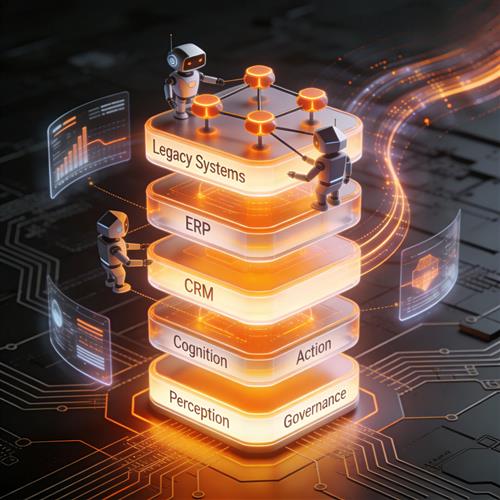

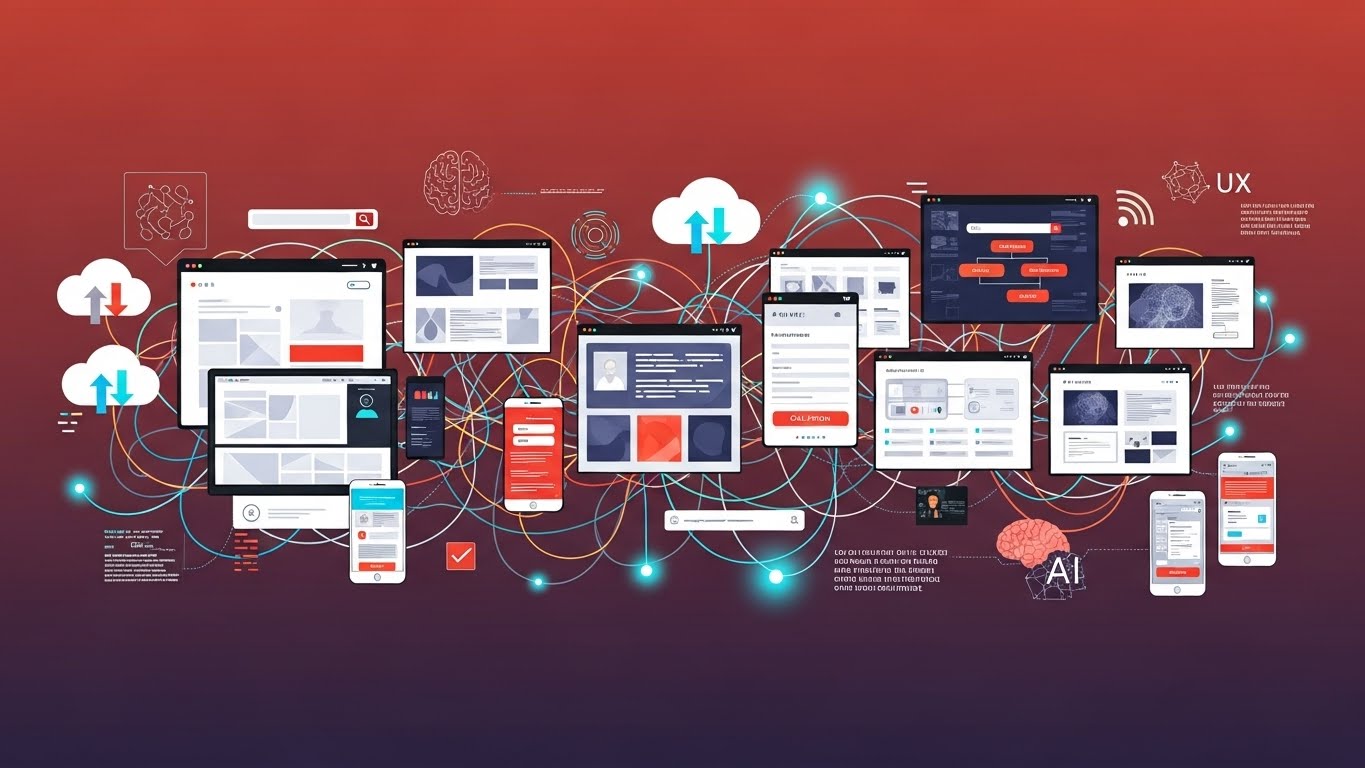




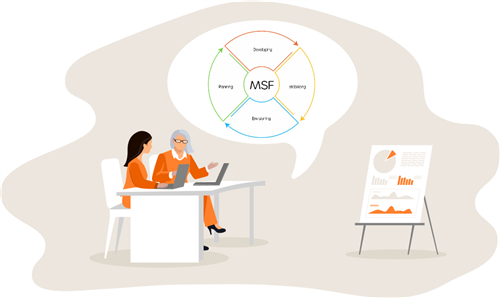


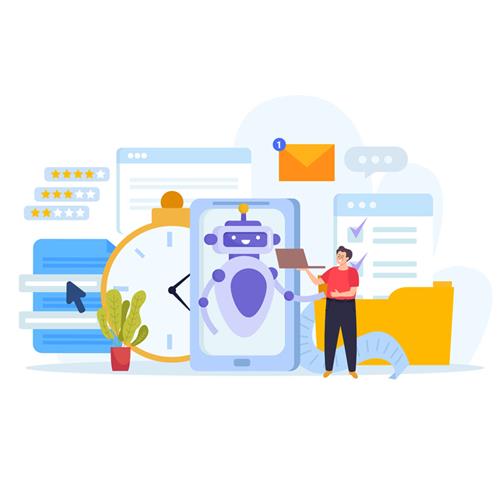



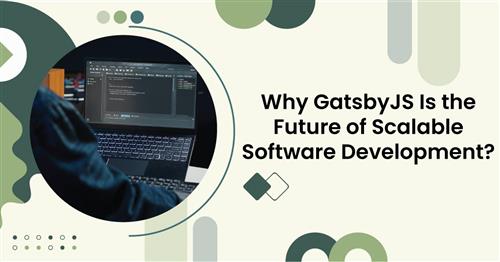

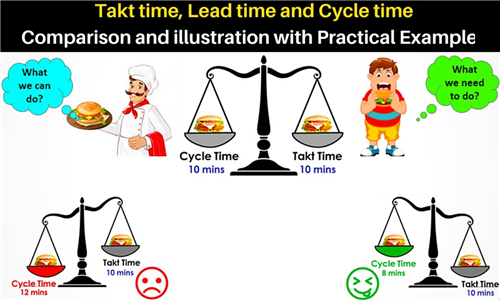



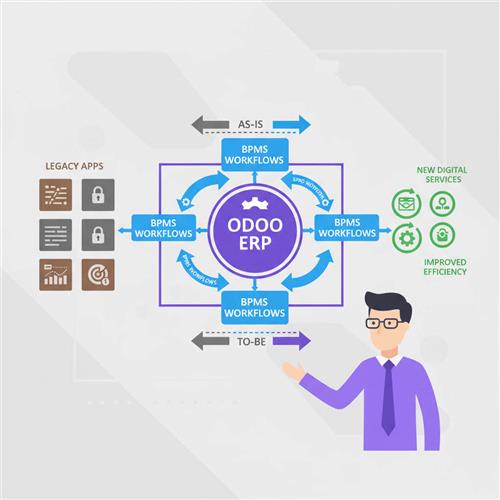




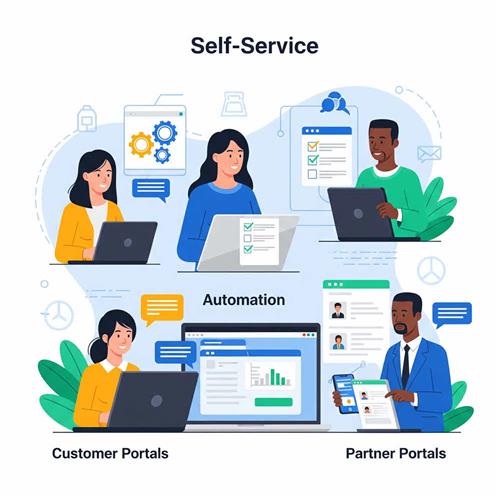









 Link copied!
Link copied!
 Recently Updated News
Recently Updated News